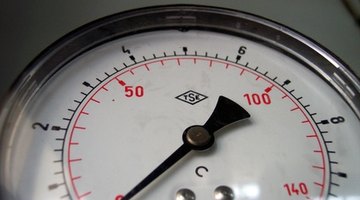How to Add a Second Pressure Tank
Adding a second pressure tank to your well reduces wear and tear on your pump motor. Another advantage to having a second pressure tank is the extra stored water in the event of a power failure. Domestic water well equipment in the United States is usually made up of a pump, pressure tank and a pressure switch. The pressure tank holds water with the pressure being controlled via compressed air in a vinyl bladder. When a faucet is opened and the pressure decreases, a sensor in the pressure switch starts the pump and refills the tank until the required pressure is obtained.

-
Create a level spot to stand your second tank on. The location of your existing equipment will help you determine where to do this. You may have a well house with a concrete floor and just have to clear a space, or your well may be outdoors, in which case you may have to pour a concrete plinth or stand the tank on concrete blocks. Set up the new tank on its new base. The second tank should be as close as possible to the first tank.
-
Measure the distance from the inlet pipe of your existing pressure tank to the inlet pipe of the new pressure tank. Measure the diameter of your well pipes. Purchase a T-connector and an elbow connector. If you have copper or galvanized steel pipes you will have to measure what lengths of pipe you need and purchase threaded pipes of the correct length and diameter. If your well uses PVC or PEX plastic pipes, you will be able to cut them to length using a handsaw or power saw.
-
Shut off the power to the well pump at the main board. Drain all the water out of the existing tank -- there should be a faucet at the bottom for this purpose. Cut the inlet pipe to the old tank or undo the existing joints with a wrench.
-
Connect a new length of pipe to the new pressure tank by placing a T-connector on the pipe that goes into the first pressure tank. Lead a piece of pipe to another T-connector at the inlet pipe to the new pressure tank. Join them and fasten securely. For metal pipes wrap Teflon pipe tape on the threads before tightening with a wrench. If your pipes are PVC or PEX use pipe cement.
-
Flip the power switch back on. Your pump will fill both tanks and keep them at the preset pressure.
Writer Bio
Trish Jackson is an author, blogger and freelance writer. Her second romantic suspense novel, "Redneck P.I.," was released in March 2011. Jackson particularly likes to write articles relating to life in the country, animals and home projects and has kept a blog focusing on this since 2006.
Photo Credits
- barometer image by timur1970 from Fotolia.com
More Articles



